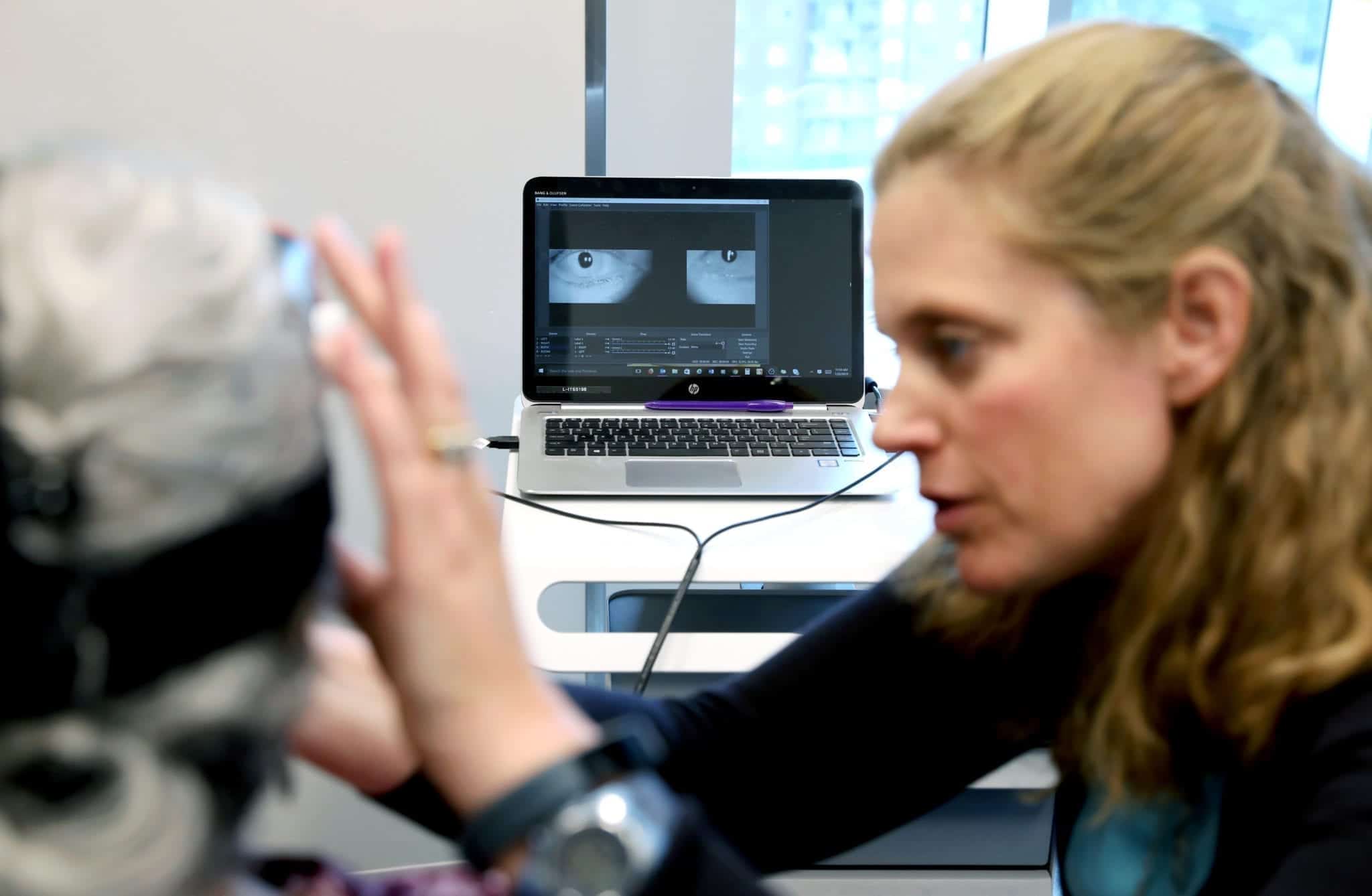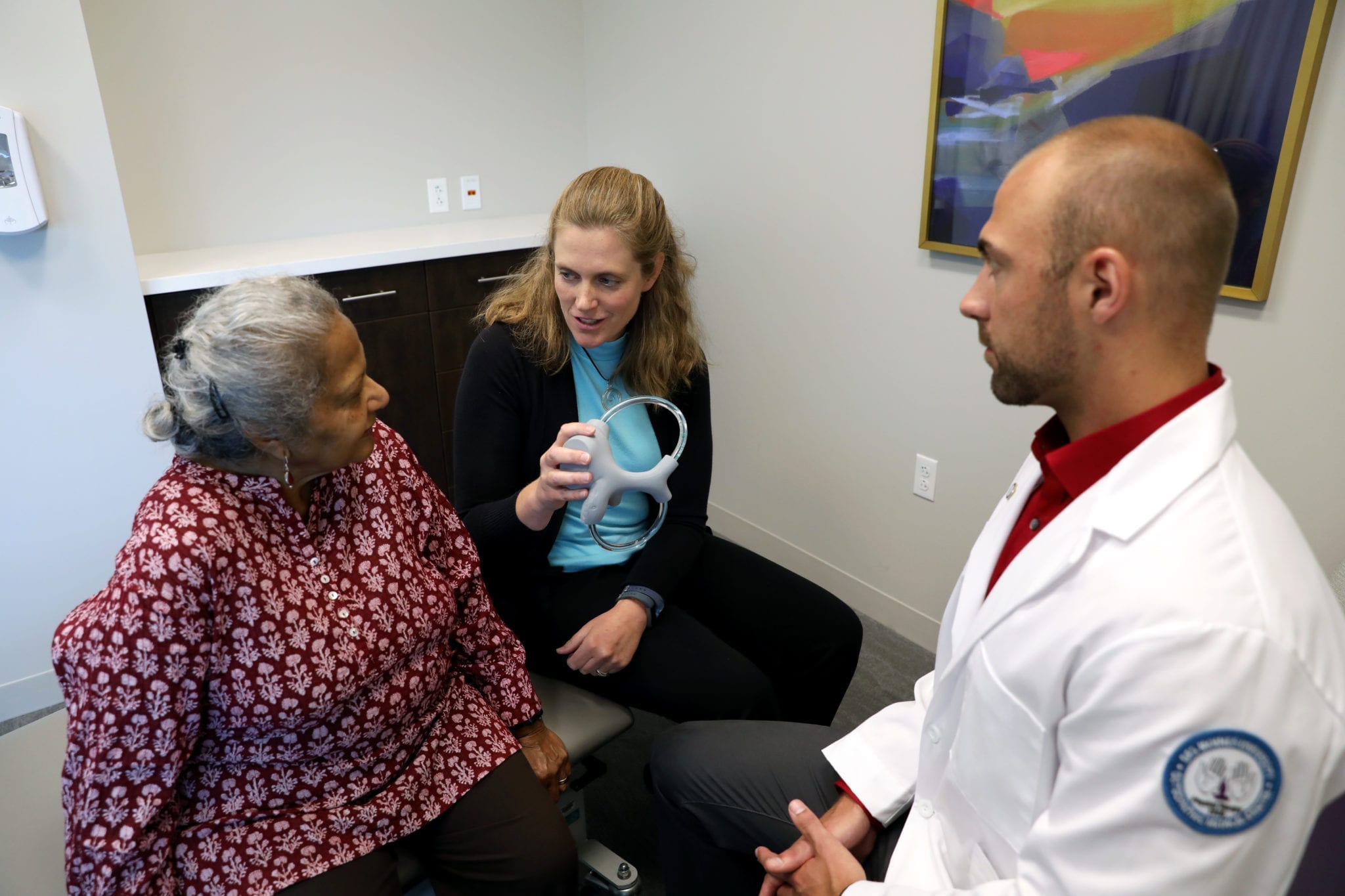Do you suffer from dizziness, vertigo, lightheadedness or imbalance? Is it affecting your quality of life? You may be among the estimated 69 million Americans ages 40 and older who have vestibular disorders, which also can affect people of any age. Because the causes of these disorders vary and can be difficult to diagnose, those affected should seek help from a provider with expertise in vestibular therapy.
The vestibular system involves parts of the inner ear and brain that, when working properly, process information that gives one a sense of balance and spatial orientation. Disease, injury, certain environmental conditions and genetics can damage these processing areas, resulting in vestibular disorders.
“The common complaint relating to these disorders is feeling dizzy,” says Michelle Brown, P.T., D.P.T., CCVT, a physical therapist at DMU. “I ask these patients to be as specific as possible about how they’re feeling, because the causes may relate to their inner ear, their cardio system, lower limbs or other issues.”
In November Dr. Brown earned her Certificate of Competency in Vestibular Therapy from 360 NeuroHealth. Topics of the 12-week comprehensive program included anatomy and physiology, diagnostic testing, oculomotor and vision exam, cervical exam and treatment, vestibular rehabilitation, evaluation and treatment of benign paroxysmal positional vertigo (the sudden sensation that you’re spinning, one of the most common causes of vertigo), vestibular migraines, central versus peripheral vestibular disorders, nystagmus identification and diagnosis, and concussion assessment. She encourages people who experience dizziness or similar sensations to ask their care provider to consider whether a vestibular disorder is the reason.
“If such a disorder is identified, the patient will be able to get the proper treatment sooner,” she says. “If not, as the disorder further affects function and well-being, the patient may have an inability to work and socialize, increased anxiety, stress or risks of falling.”

Unfortunately, because vestibular disorders are just one of many possible causes of severe dizziness, patients with those disorders may be misdiagnosed or prescribed medications to suppress it. “The medications can help with symptoms, such as vertigo, but they may not address the disorder causing them,” Dr. Brown says.
According to the Vestibular Disorders Association, 80 percent of patients with vertigo have an inner ear disorder. That can be confirmed with assessments of the patient’s balance and eye and head movements, which are controlled by the vestibular system. At the DMU Physical Therapy Clinic, Dr. Brown may move the patient’s head and neck to check whether that causes dizziness. She also may place a pair of infrared googles on the patient, who sees complete darkness so the eyes have nothing to fixate on. Meanwhile, Dr. Brown can see closeup, subtle movements of the patient’s eyes on a nearby computer screen.
Certain involuntary, jerking eye movements may indicate the patient has benign paroxysmal positional vertigo, or BPPV, one of the most common causes of vertigo. It results from tiny crystals in the inner ear being out of place. These crystals make us sensitive to gravity and help us maintain our balance. If they move to another part of the ear because of damage, such as that caused by a blow to the head, the crystals cause sensitivity to movement and position changes that otherwise wouldn’t affect us, sparking vertigo.
“If crystals are not the problem, we look at other causes including ear infection and vestibular nerve inflammation,” Dr. Brown says.

Once the vertigo’s root cause is identified, treatment options can include improving the function of the other ear or “uptraining” other systems of the body, including lower limb and foot balance, to compensate. The diagnosis and treatment process can require patience – for example, the provider first has to make the patient dizzy, which is often very uncomfortable, to determine what’s going on. That’s why Dr. Brown provides patients with constant communication and education about what she’s doing and assurance the treatment can be effective. She describes a patient who, through therapy, was able to go from using a wheelchair to needing just a companion’s arm for support.
“I’ve had patients who’ve said, ‘I used to be able to do all these things, but now I can’t get out of bed.’ Physical therapy from a therapist with a vestibular background can and does help,” she says. “I enjoy all types of physical therapy, but I get a lot of hugs from vestibular patients.”
For more information about the DMU Physical Therapy Clinic, visit its website. To make an appointment, call 515-271-1717.

